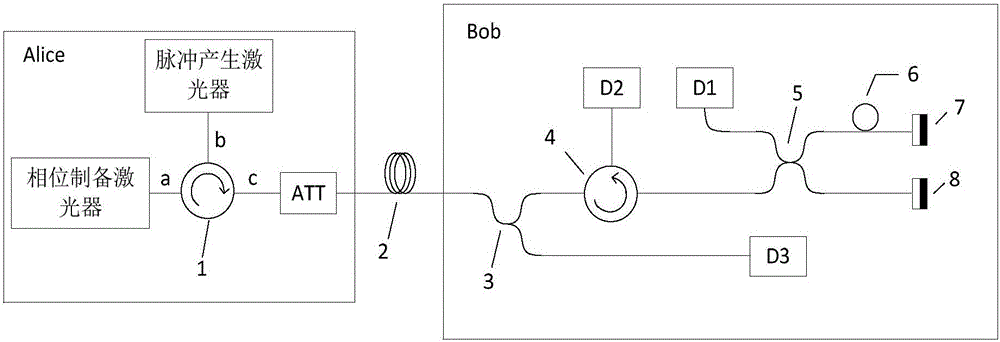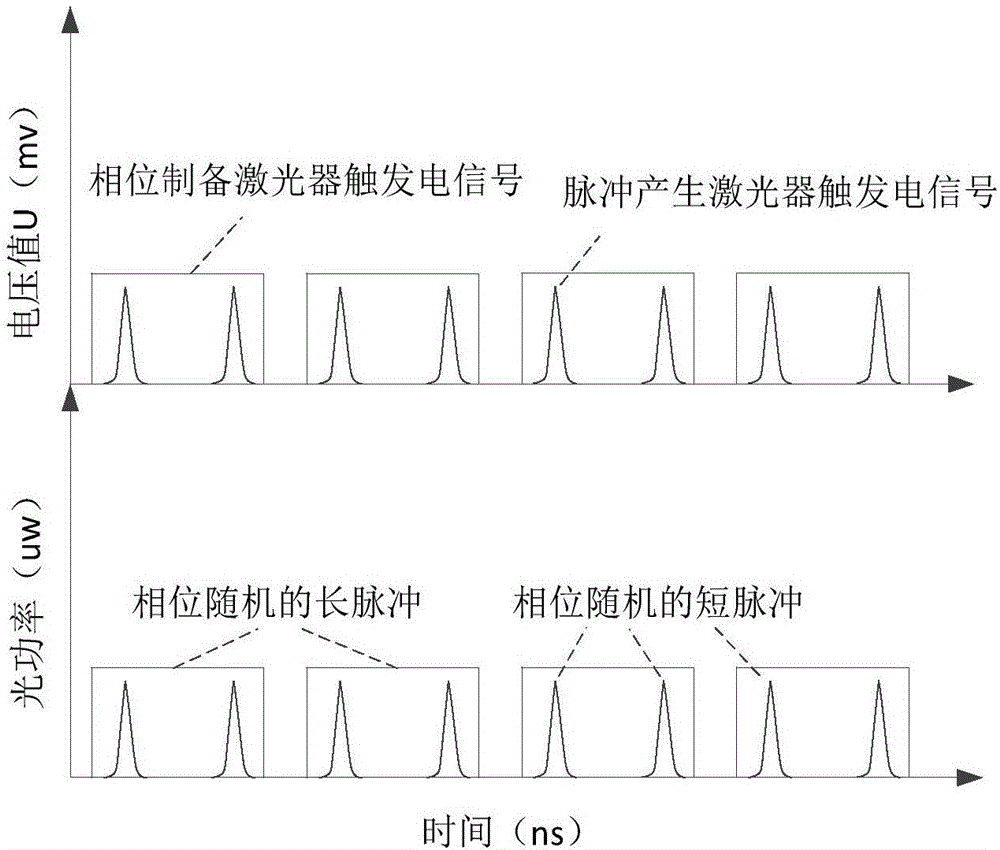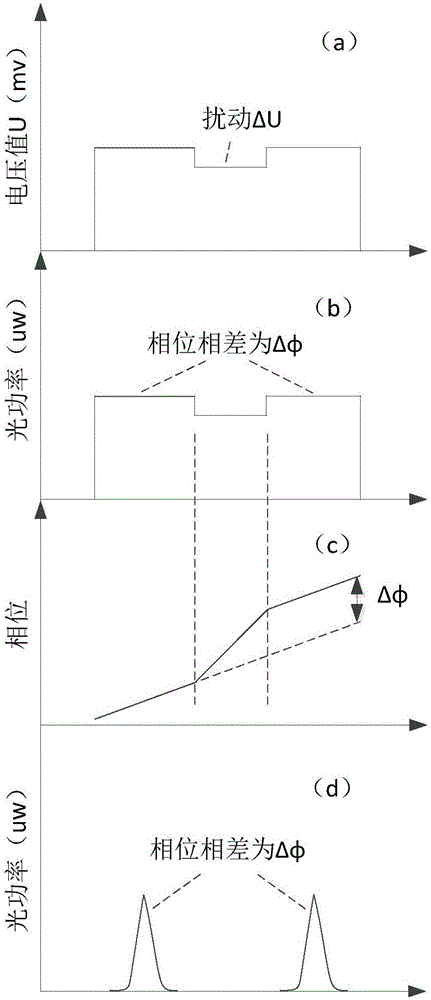QKD system sending terminal based on phase modulation light source, receiving terminal, QKD system and method thereof
A phase modulation and receiving-end technology, applied in the field of quantum communication, can solve problems such as limitations of system structure integration, high half-wave voltage, system structure and control complexity, etc., to achieve efficient quantum key distribution, simplify structure and control, increase The effect of controlling difficulty
- Summary
- Abstract
- Description
- Claims
- Application Information
AI Technical Summary
Problems solved by technology
Method used
Image
Examples
Embodiment 1
[0044] Such as figure 1 As shown, this embodiment is based on the QKD system of the phase-time unbalanced base vector coding of the phase-modulated light source, including a sending end (Alice) and a receiving end (Bob).
[0045] Alice includes a phase modulation light source and an attenuator (ATT). The phase modulation light source specifically includes a phase preparation laser, a pulse generation laser, and a fiber circulator 1 (optical devices such as isolators are not shown in the figure). In this embodiment, the phase modulation light source can be used Realistic lighting, phase encoding, and time encoding.
[0046] The optical pulse output by the phase preparation laser enters the fiber circulator 1 through the a port, and is injected into the pulse generating laser through the b port, and the optical pulse output by the pulse generating laser is output from the c port through the optical fiber circulator through the port b, that is, the c port is used as phase modulat...
Embodiment 2
[0068] The security proof of quantum key distribution in Embodiment 1 is applicable to the case of single photon, and it is difficult to generate a single photon source in practice, so the weakly coherent light emitted by the phase modulation light source and attenuated to the single photon level by the intensity attenuator ATT is used to generate replace. In addition to the single-photon component, the light pulse emitted by the weakly coherent light source also has a multi-photon component. An eavesdropper can use the multi-photon component to carry out a photon number separation (PNS) attack. The idea of decoy state is proposed to resist the photon number separation (PNS) attack. In order to detect the attack of the eavesdropper, Alice randomly emits light pulses of different intensities, in which the proportions of single photons and multi-photons are different. The eavesdropper cannot distinguish which intensity of light pulse Alice uses, so he cannot adapt to the pass ...
Embodiment 3
[0101] see Figure 7 , this embodiment replaces the optical fiber Michelson interferometer structure in Bob with the optical fiber Mach-Zehnder interferometer structure. The short pulse sequence arriving at Bob is divided into two paths by the fiber beam splitter 9 with any beam splitter ratio, and one path enters the single photon detector D3, which is the same as the above two embodiments, the detection of the time base vector is completed, and the other path enters the optical fiber splitter D3. Beamer 10.
[0102] The fiber splitter 10 with the splitting ratio of 50 / 50, the fiber splitter 11 with the splitting ratio of 50 / 50, and the fiber delay line 12 constitute the unequal-arm Mach-Zehnder interferometer structure of optical pulse differential delay. In order to realize the interference of two pulses before and after in the short pulse sequence, the setting of the fiber delay line 12 at this time is to realize the differential delay of a short pulse interval.
[0103]...
PUM
 Login to View More
Login to View More Abstract
Description
Claims
Application Information
 Login to View More
Login to View More - R&D
- Intellectual Property
- Life Sciences
- Materials
- Tech Scout
- Unparalleled Data Quality
- Higher Quality Content
- 60% Fewer Hallucinations
Browse by: Latest US Patents, China's latest patents, Technical Efficacy Thesaurus, Application Domain, Technology Topic, Popular Technical Reports.
© 2025 PatSnap. All rights reserved.Legal|Privacy policy|Modern Slavery Act Transparency Statement|Sitemap|About US| Contact US: help@patsnap.com



